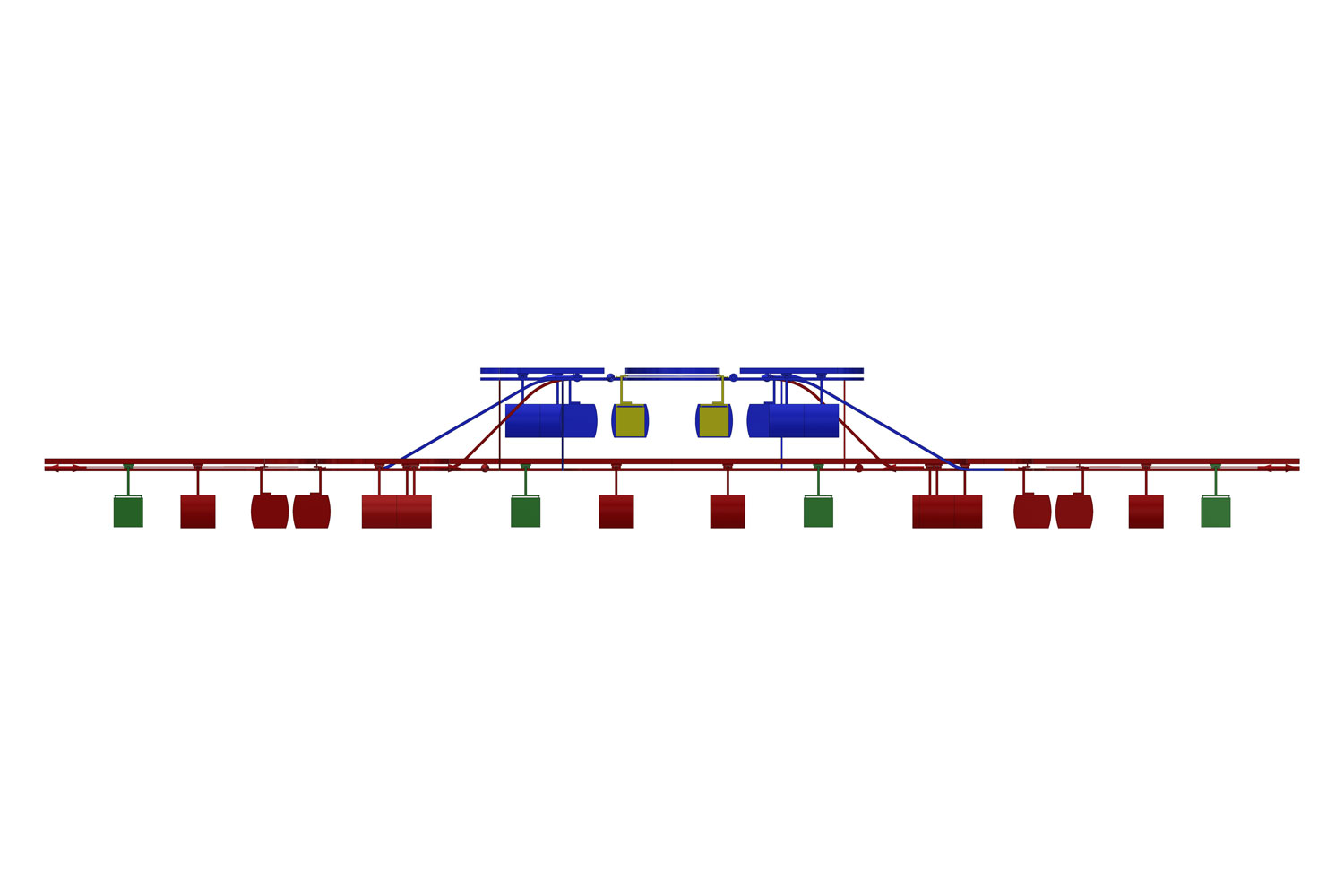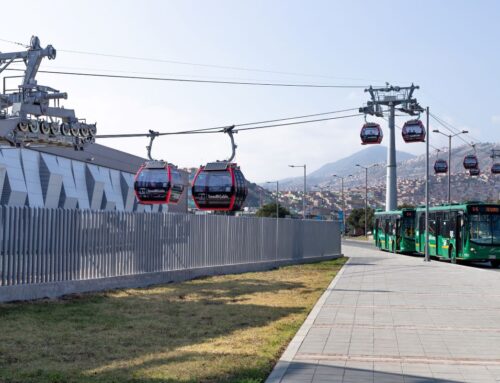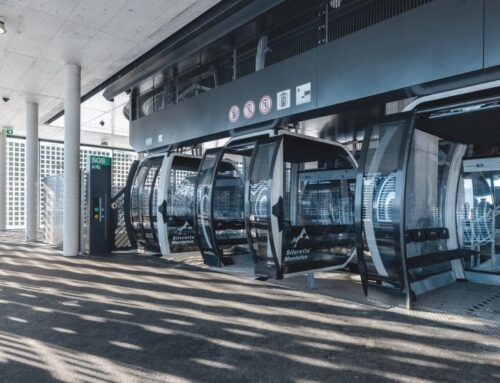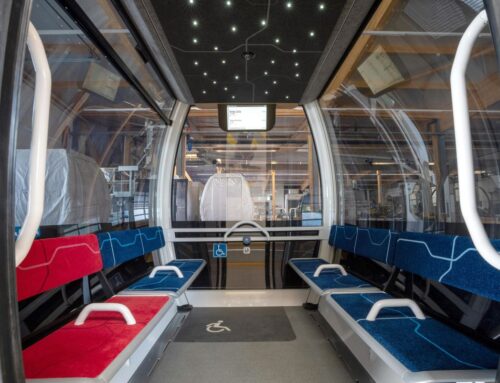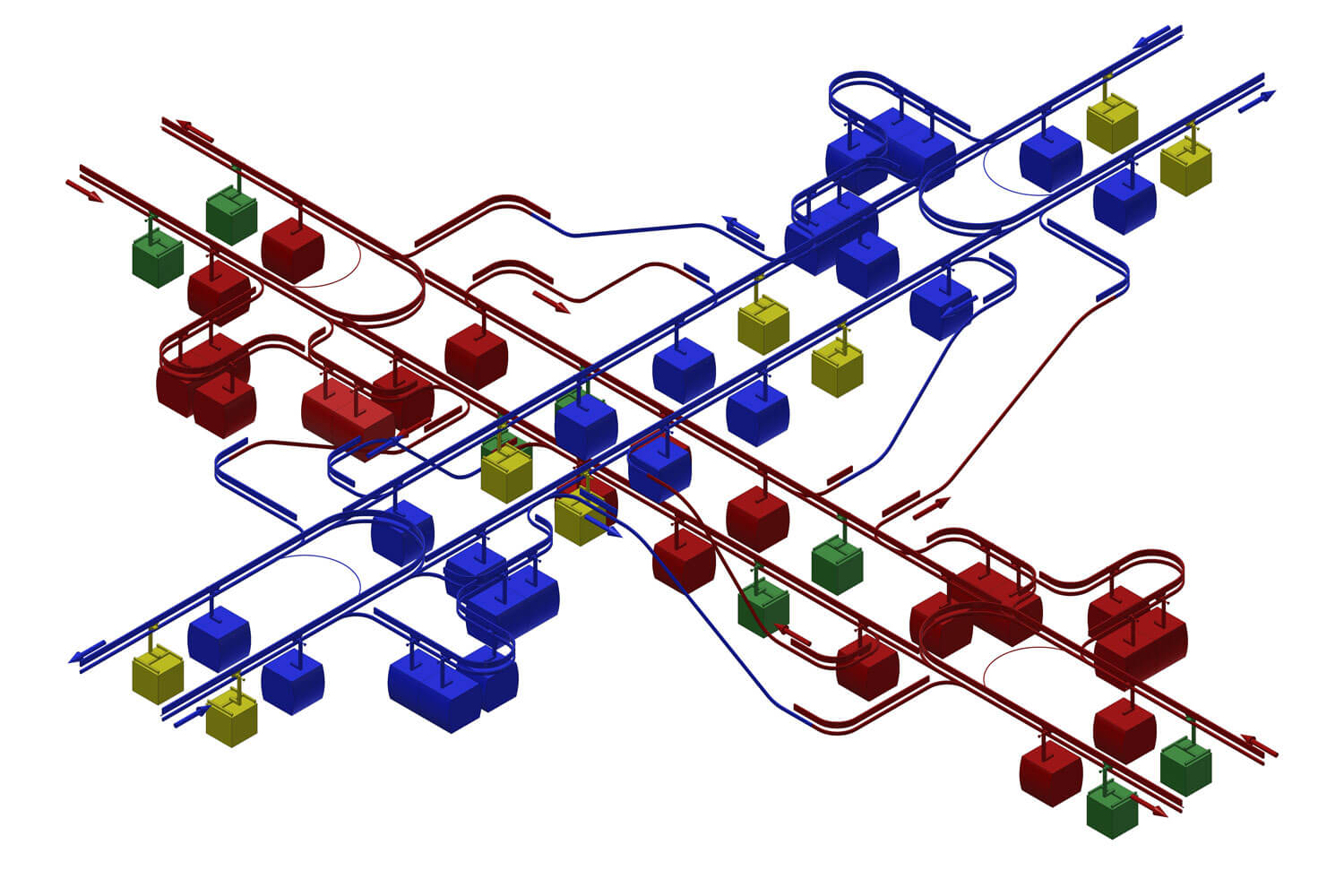
Cities, SI Urban 1/2020
Intersections and Points
What is effectively new?
To achieve this, the routes run through stations that are connected by cable cars (similar to a motorway interchange). A smart control guides gondolas over the route network and performs track services. “The gondolas are available 24 hours per day and as required; operation is largely autonomous,” Obermayr says.

The basic concept
Essentially, any station can be reached from any desired boarding point. The cable car network comprises individual cable car sections, which are connected by terminal stations (line starts), star stations (line intersections) and through-stations. “Each station is shown like a railway station, where passengers can board and alight with barrier-free access,” Obermayr explains.
The destination is selected on a display with a simple design, on which the stations are marked at the correct location on a map (in a way that is suitable for blind users). “Passengers select the destination, number of people in their travel group, luggage volume, and bulky items such as bicycles, wheelchairs or pushchairs.
A smart control then plans the route and ensures transport safety,” the engineer says. The ticket is purchased using a personal identity card with a transponder function (ID card, insurance card, credit card, ski pass etc.). The costs are debited monthly or paid in advance and stored as a credit balance.
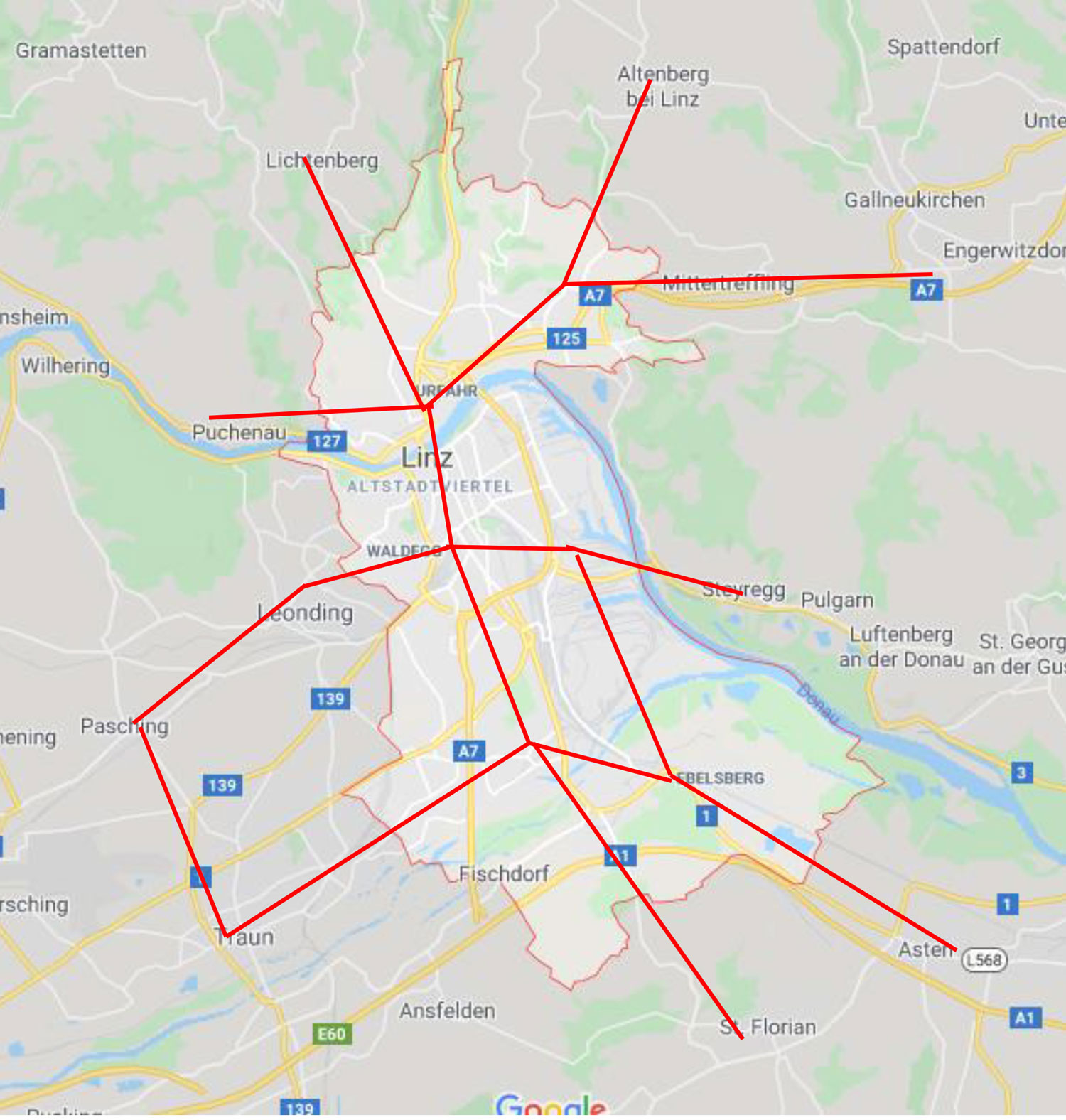
Smart Control
The centrepiece of the entire transport solution is a smart control. If a gondola is available in the station, it moves to the alighting area. If no gondola is available, a gondola is called from the next station or a gondola arriving “coincidentally” is diverted into the station – if the same destination (route) is desired and enough space is available.
The gondola therefore “recognises” how many people are inside and thus controls the option of alighting. If the direction is not right or the gondola is full, it is moved on to the next line section.
The control works on the one hand by means of the demand input in the station (the passenger registers a transport need) and on the other hand by direct transport order in the gondola (destination station input). The option is available to travel to two or more stations in succession, if they are on the same line.
Waiting passengers can identify “their” gondola by means of a call and/or a display. If a coherent group is entered, the group will not be separated based on demand (rush hour) unless the gondola capacity is exceeded.
“Speaking of peak times: a temporal demand profile exists for each station. This ensures that gondolas continue to arrive at times of greater transport demand and thus that enough gondolas are always available,” Obermayr emphasises.
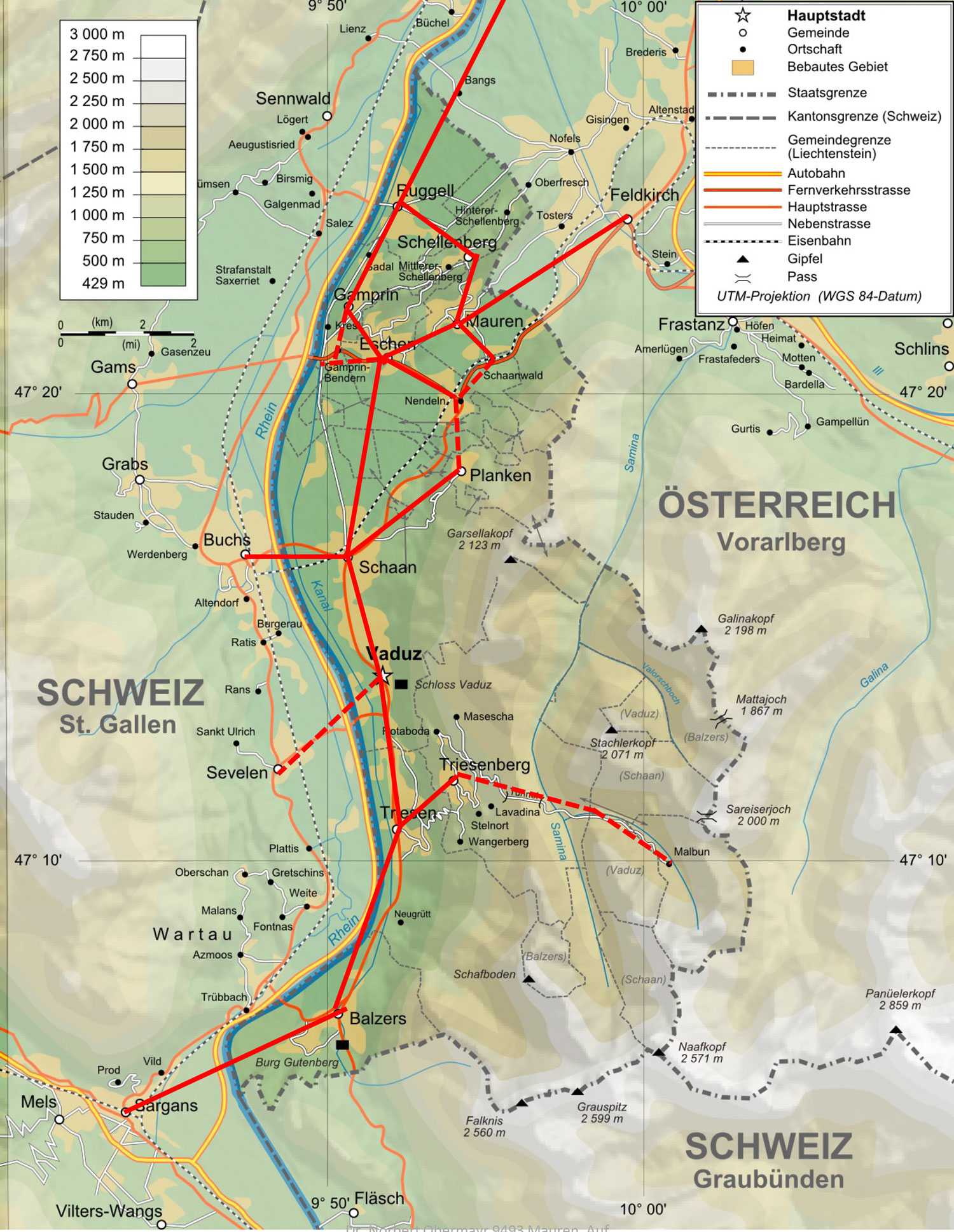
Sheave assembly with caterpillar sheath
According to the concept, the stations – which have an area of are approx. 30 square metres – are to be constructed in town centres as far as possible and more precisely, on existing buildings such as car parks or bus stations. The routing is in straight lines as far as possible; slight curving would be feasible.
Supports are erected along the route, which hold the sheave assemblies. “In noise protection zones, the sheave assemblies are covered with caterpillar sheaths. These prevent jolting and thus also the resulting noise,” Obermayr explains a small idea within his great innovation.
Freight transport with containers
However, the concept of the cable car network can function not only for passenger transport but also for freight transport. For this, instead of the gondola, a lifting beam is mounted on the cable car clip, onto which containers or even platforms for vehicles then dock.
“Technically, small containers up to 1.5 tonnes are possible, which are received from the cable car at freight stations,” the engineer is confident. The “last mile” could be covered using electric vans.
Outlook
The concept from Norbert Obermayr (office@obermayr-ec.com) is still an idea but the engineer is hoping for partners in politics and industry, who will support him with a feasibility study.
As such, the Austrian Research Promotion Agency is already reviewing its support, and politicians and media representatives have already examined at the concept. Perhaps a cable car network will soon be running over Linz, Liechtenstein or another conurbation.
